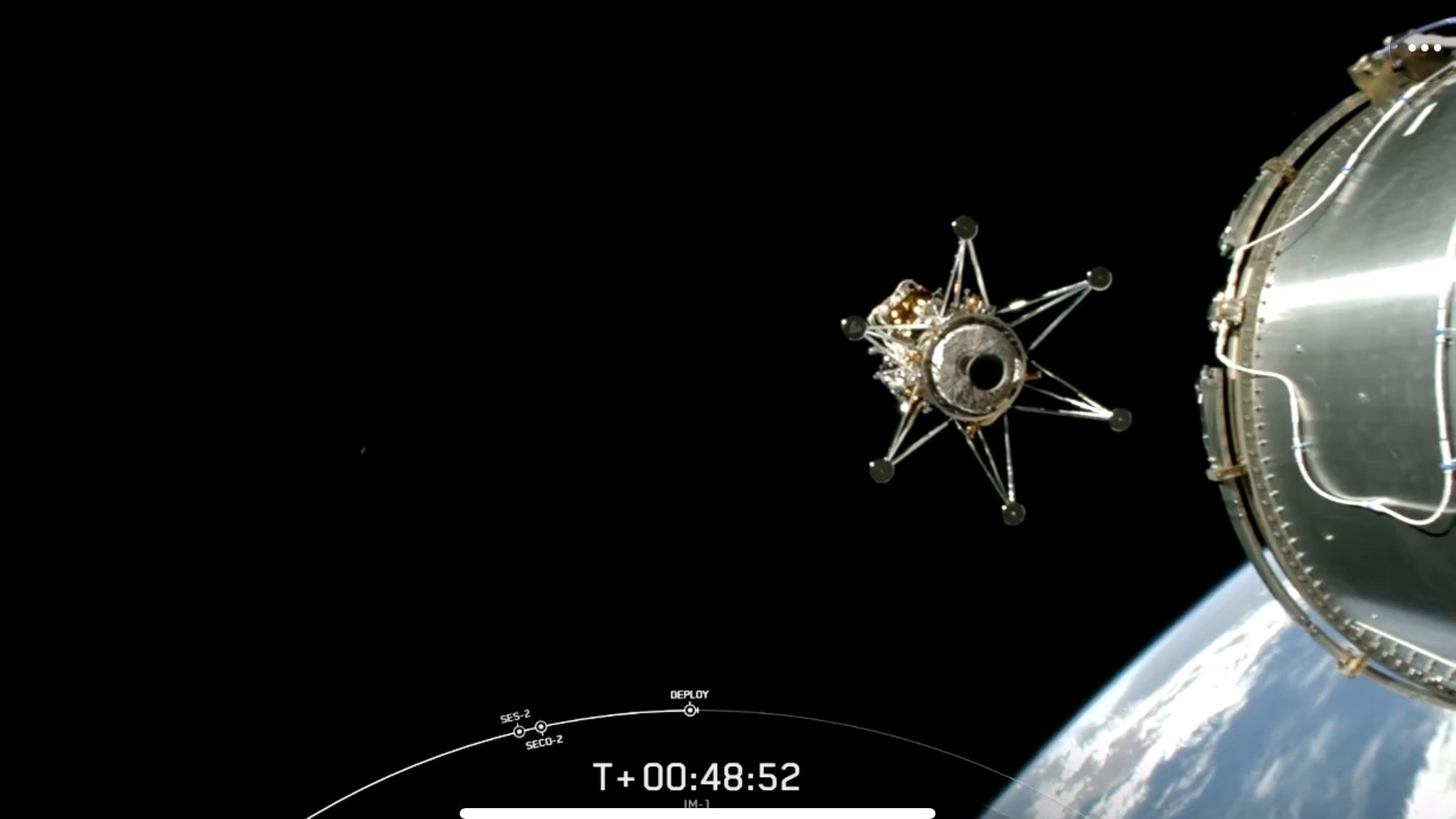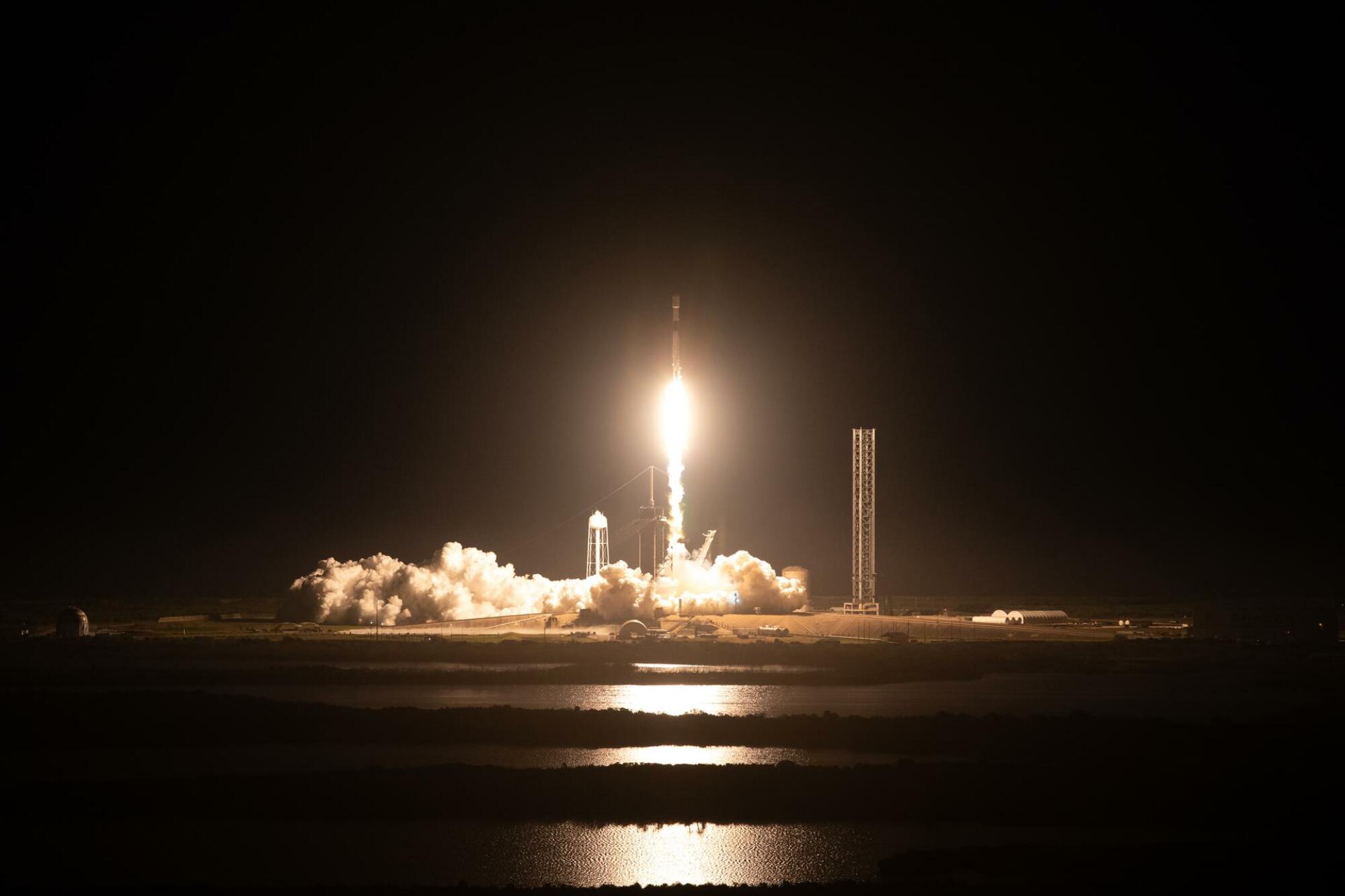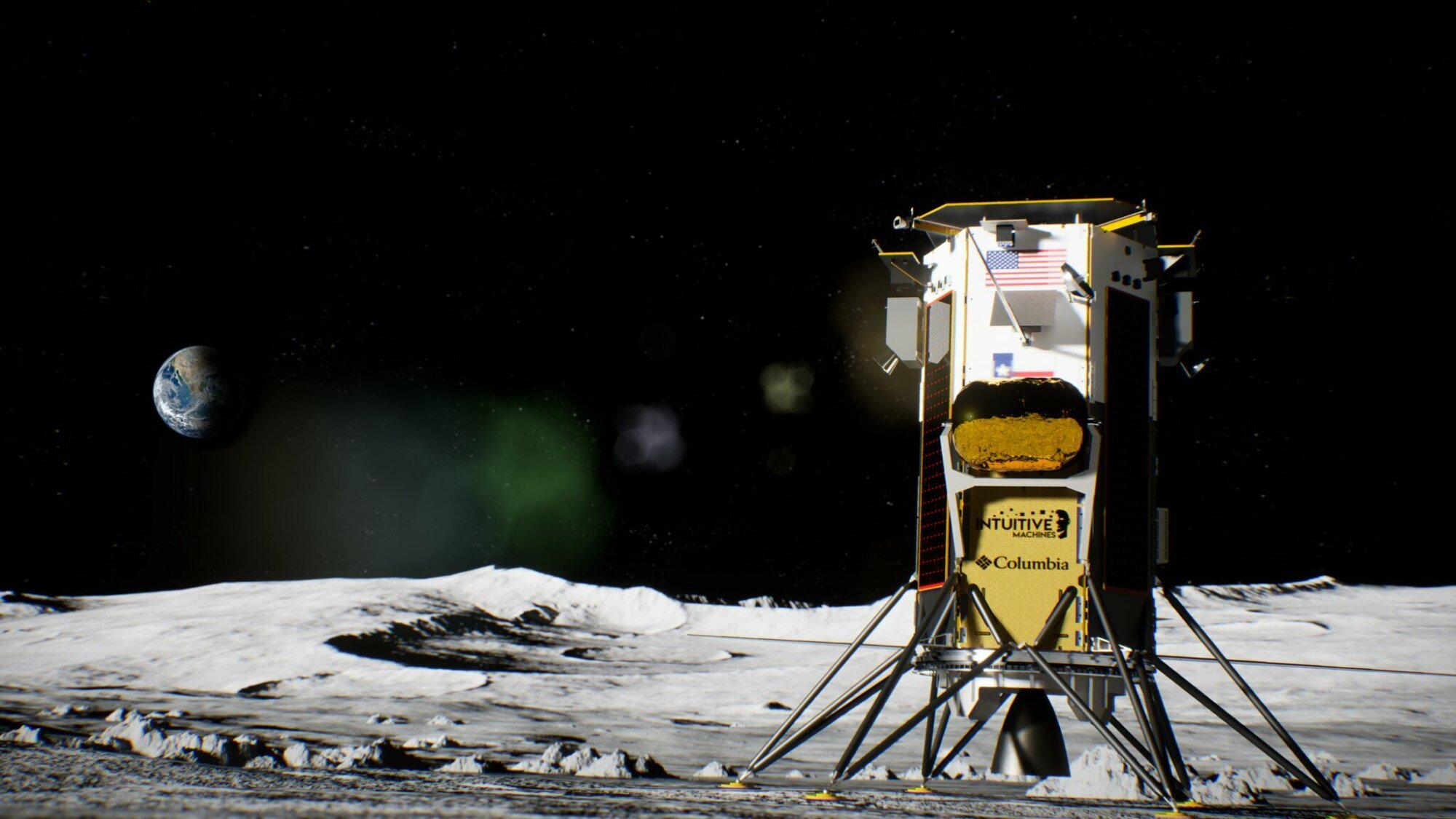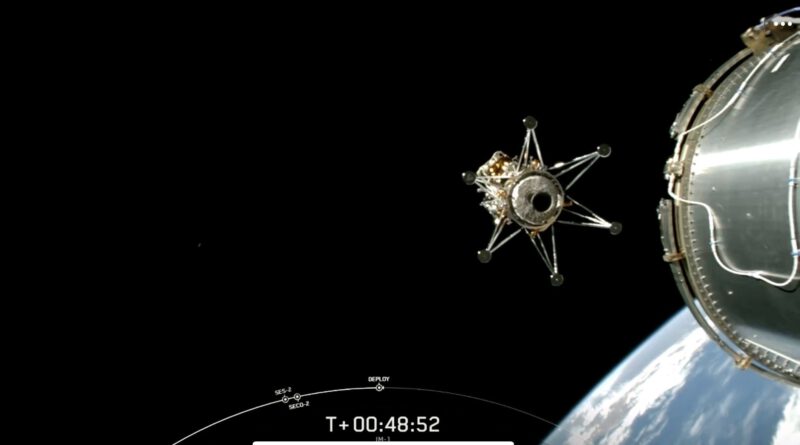Watch SpaceX gracefully release a moon lander into space

NASA is getting another crack at landing on the moon, after a Pittsburgh company it contracted failed to reach its destination and plunged back to Earth last month.
This time it’s Houston-based Intuitive Machines at the proverbial wheel, though its Nova-C spacecraft, dubbed Odysseus, is robotic with no astronauts aboard. The mission launched at 1:05 a.m. ET on Feb. 15 from Cape Canaveral, Florida. Less than an hour later, its SpaceX Falcon 9 ride separated from the lander, setting it free on a space journey to the lunar south pole.
SpaceX captured the moment of deployment in a crisp video, shared on Elon Musk‘s social platform X, formerly known as Twitter. As the six-legged lander departed, it resembled the underbelly of a starfish, carried away by the blackest of seas.
Despite appearances, and the misadventures of the last private moon mission, the spacecraft is not adrift. Mission controllers established communication with Odysseus just before 2 a.m., and the lander is generating solar power. It’s expected to touch down on Feb. 22.
Only five nations — the former Soviet Union, United States, China, India, and most recently Japan — have managed to land on the moon without wrecking the spacecraft beyond recognition. No commercial company has achieved this feat, although a few have tried.
“We are keenly aware of the immense challenges that lie ahead,” said Intuitive Machines CEO Steve Altemus in a statement. “However, it is precisely in facing these challenges head-on that we recognize the magnitude of the opportunity before us: to softly return the United States to the surface of the Moon for the first time in 52 years.”

NASA selected Intuitive Machines as one of several vendors for its Commercial Lunar Payload Services initiative and is paying the company $ 118 million to deliver instruments to the moon. The program has recruited the private sector to help conduct experiments, demonstrate new technology, and send back crucial data. Through these contracts, NASA wants to see a regular cadence of moon missions to prepare for astronaut expeditions in 2026 or later.
As Intuitive Machines attempts to be the first of these vendors to land on the moon, SpaceX is gearing up for its third test flight of Starship, which will be its own moon-bound spacecraft. NASA will depend on Starship and its human landing system to get astronauts on the moon. The spacecraft also must demonstrate an uncrewed flight to the moon before 2026.
The IM-1 mission intends to land at the Malapert A crater, just under 200 miles from the south pole. Several spacefarers have set their sights on this region because of its ice. The natural resource is coveted because it could supply drinking water, oxygen, and rocket fuel for future missions.

But landing on the moon remains onerous. The moon’s exosphere provides virtually no drag to slow a spacecraft down as it approaches the ground. Furthermore, there are no GPS systems on the moon to help guide a craft to its landing spot.
“We learn lessons from all of our counterparts that have come before us,” said Trent Martin, Intuitive Machines’ vice president of space systems, during a prior news conference. “Spaceflight is hard. A million things have to go right, and if one thing goes wrong, you can still have a failure.”

